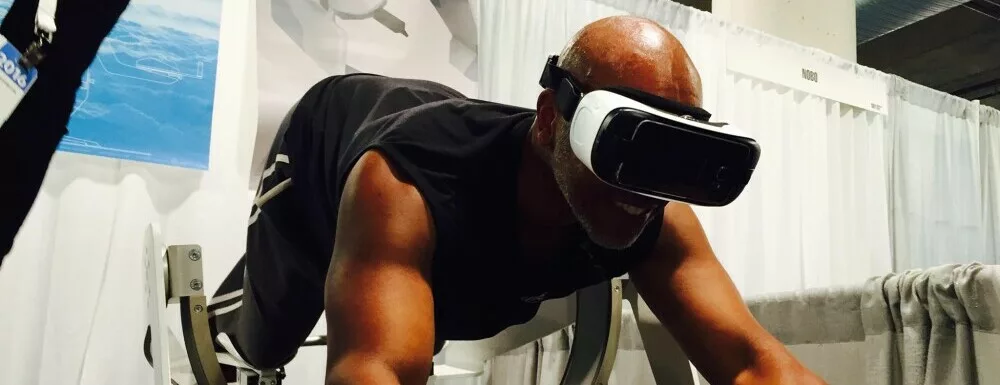Gamification in Exercise
Gamification in exercise has become a buzzword in the fitness world, and it’s all about integrating game-like elements into workouts to make them more engaging. This concept taps into our natural tendencies to enjoy playing games, making exercise not only more fun but also more motivating.
At the core, gamification employs psychological principles that transform mundane activities into engaging experiences. It revolves around creating goals, offering rewards, and providing instant feedback. Think of getting points for every step you take or earning badges for reaching new milestones. These elements boost motivation, making people stick to their routines more effectively.
Take video games, for instance. They’re designed to keep you hooked with levels, challenges, and rewards. The same idea applies to exercise—making it exciting and rewarding keeps you coming back for more. By turning workouts into a game, it triggers a release of dopamine, the feel-good chemical, which reinforces positive behavior.
Successful examples are everywhere these days. Fitness apps like Strava, Fitbit, and Zombies, Run! have mastered the art of gamification. They offer users points, levels, and social sharing options to fuel competition and collaboration. It’s about turning every workout session into a potential achievement.
Gamification isn’t just a trend; it’s rooted in solid psychological theory. By understanding how our brains react to these gaming elements, it’s possible to unlock motivation you might not even realize you have. This approach capitalizes on the brain’s love for reward and progress, making exercise something to look forward to every day.
Engagement Through Play: How Gamification Enhances Workout Experiences
Gamification has the power to transform a tedious workout into an exciting adventure. By weaving game elements into exercise routines, workouts become more than just a set of tasks; they become an experience. This idea isn’t just about the immediate fun factor, though that’s a big part of it, but about changing the way people feel about exercise altogether.
Game elements include points systems, virtual rewards, challenges, and leaderboards. These tools create a sense of achievement and progression. When you see your name climbing a leaderboard or earn a digital trophy for completing a challenge, it feels rewarding and pushes you to strive for the next goal.
It’s much less daunting to commit to a workout when it’s presented as a game. Gamification creates a compelling narrative around fitness. Whether it’s an app transforming a run into an escape from virtual zombies or a routine that levels up as you improve, the focus shifts to progression rather than monotonous repetition.
The social aspect can’t be ignored either. Many apps let you connect with friends or join community challenges, turning fitness into a shared experience. This fosters a sense of community, encouraging users to support and compete with each other. Challenges that involve team goals can boost commitment and create lasting bonds. This taps into our inherent competitive spirit, which can drive enhanced performance and satisfaction.
Don’t underestimate the boost a little playful competition can give. Testimonials from users of gamified fitness apps often mention increased motivation and consistency, all thanks to the interplay of competition and camaraderie.
Finding enjoyment in exercise is a game-changer (pun intended). Gamification shifts the paradigm, making workouts something you want to do, not just something you have to do. By leveraging these playful strategies, anyone can turn their daily exercise routine into an engaging, motivating, and ultimately more satisfying experience.
Technology and Innovation: Tools Powering Gamified Fitness
Technology is at the heart of the gamification movement in fitness. With advancements in tech, the variety of tools that bring game elements to workouts has exploded, making it easier than ever to engage with fitness in a fun, interactive way.
Fitness apps are pivotal, often at the forefront of this movement. Apps like Fitbit, MyFitnessPal, Betterme and Zwift apply game-like features such as daily goals, badges, and virtual races. These features help users keep track of progress, challenge themselves, and stay motivated.
Wearable technology has also made significant strides. Devices like smartwatches and fitness bands now come equipped with capabilities to track physical metrics and provide real-time feedback. Wearables connect to fitness apps, allowing for seamless integration of data that feeds back into the game’s framework.
Virtual and augmented reality (VR/AR) are stepping into the fitness world too. These technologies offer immersive experiences, turning a simple workout session into an action-packed adventure. VR can make it seem like you’re jogging through a scenic trail, while AR allows for interactive elements to be overlaid in your real-world environment.
Social media platforms and online communities further support these technologies by providing spaces for users to share achievements, create challenges, and find fitness partners. Sharing progress publicly not only adds accountability but also brings people together through shared goals and friendly competition.
Looking forward, the landscape of gamified fitness is ripe for even more innovation. We can anticipate new apps and devices that utilize artificial intelligence to personalize the gaming and workout experience, creating even more effective and enjoyable exercise routines for users.
The Impact on Health: Measuring the Benefits and Challenges of Gamified Fitness
The combination of gaming elements and exercise offers numerous benefits, driving people to move more and enjoy the process. It isn’t just about having fun; there are real health benefits to gamified fitness. Increased motivation and adherence to exercise routines often lead to improved physical health outcomes such as weight loss, increased cardiovascular fitness, and muscle strengthening.
Gamification’s ability to foster sustained engagement makes it especially beneficial for people who struggle with maintaining a consistent exercise routine. By keeping workouts interesting, these people are more likely to stick with their fitness plans, thereby promoting long-term health benefits.
Yet, like any fitness strategy, gamification comes with its challenges. Over-reliance on game mechanics can sometimes overshadow the fundamental goal: health and well-being. Users might focus more on earning points than on ensuring they’re exercising correctly or listening to their bodies’ limits. It’s crucial to balance the game elements with healthy workout principles.
Another challenge could be the inclusivity of these gamified solutions. High-tech gadgets and comprehensive fitness apps often come at a cost, making them less accessible to all. The key is ensuring that these innovations are designed and priced in ways that make them accessible to a broader audience, thereby not limiting participation to those who can afford the latest devices.
Real-world experiences and studies consistently show the potential benefits, but they also highlight these constraints. Case studies have documented significant lifestyle changes in users who have adopted gamified fitness, indicating clear health improvements and increased physical activity levels. Meanwhile, other studies remind us of the pitfalls of users becoming too focused on the game, neglecting the primary goal.
Conclusion
Ultimately, the effectiveness of gamified fitness depends on how well it is implemented and how users interact with it. When used judically, gamification has the potential to revolutionize how we approach exercise, making fitness accessible, engaging, and effective for vast audiences.
Steve Hey

Some links on this site may be affiliate links, and if you purchase something through these links, I will make a commission on them.
As an Amazon Associate, I earn commission from qualifying purchases.
There will be no extra cost to you and, you could actually save money. Read our full affiliate disclosure here.

